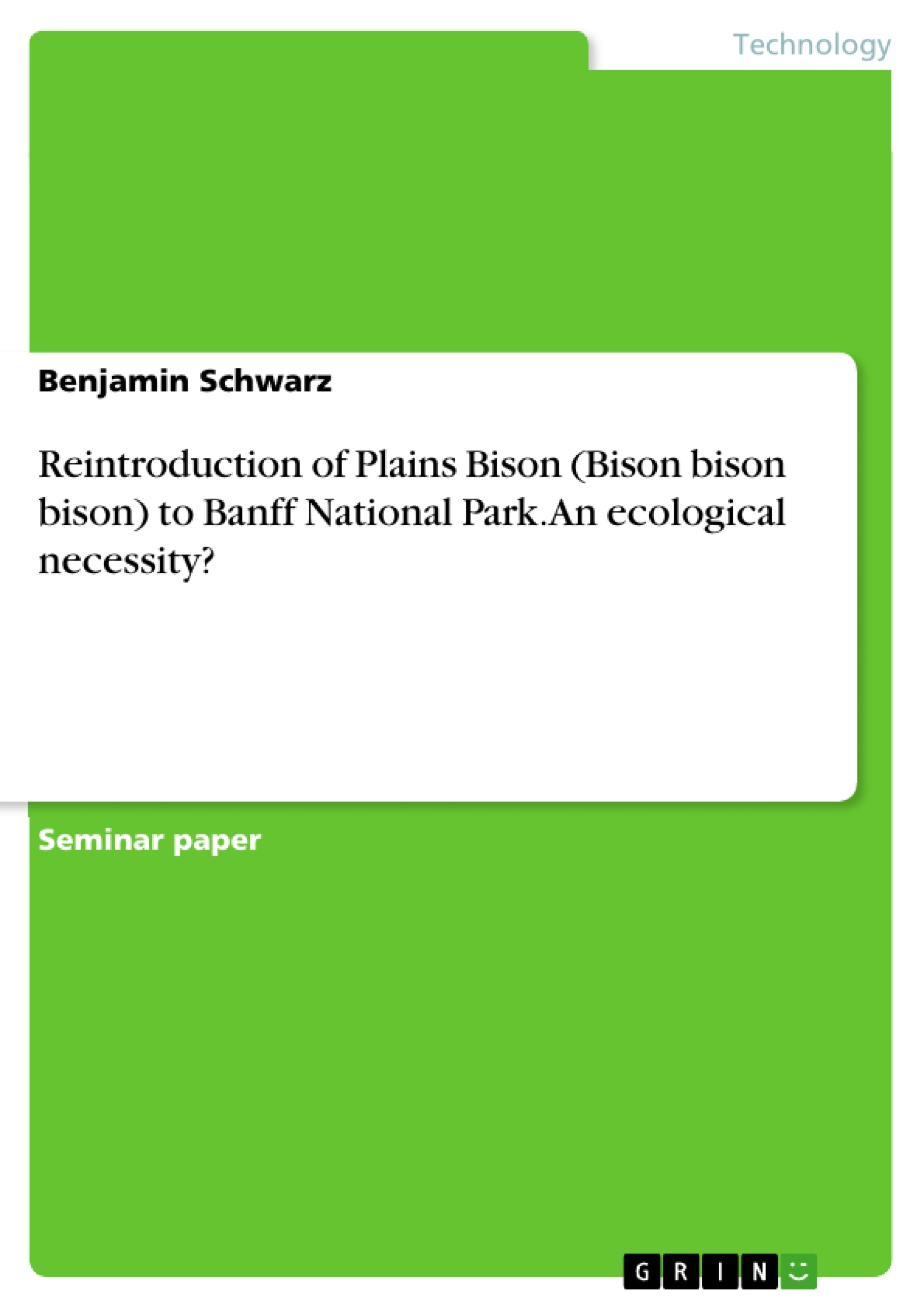In 2013, Parks Canada published a first draft plan to reintroduce plains bison to Banff National Park. This project was supported by the reasons that bison play a keyrole in the ecosystem and function as a food resource for predators and scavenger. Plains bison play a key role in prairie ecosystems. Through their grazing and wallowing combined with naturally occurring fires, plains bison have a disproportionally large impact on their environment. However, the role bison play in Banff National Park is likely to be of minor importance. In fact, the reintroduction of plains bison may even harm the Banff ecosystem through enhanced seed dispersal of exotic species and fragmentation through bison-fencing. It is concluded that if bison will be reintroduced, more research is needed, first, on the impact of bison to the Banff ecosystem and second, on the impact of bison fencing on the movement of other wildlife. Also, Parks Canada should be willing to cancel the project if the ecological costs outweigh the benefits.
Inhaltsverzeichnis (Table of Contents)
- Abstract
- Introduction
- What are the reasons for Parks Canada to reintroduce Bison?
- Key role of plains bison in the prairie ecosystem
Zielsetzung und Themenschwerpunkte (Objectives and Key Themes)
This article explores the ecological implications of reintroducing plains bison to Banff National Park, analyzing the arguments for and against the project. The author focuses on the role of bison as a keystone species in prairie ecosystems and examines the potential benefits and drawbacks of their reintroduction to a mountainous environment.
- The ecological role of plains bison in prairie ecosystems
- The potential impact of bison reintroduction on the Banff ecosystem
- The significance of bison as a keystone species
- The influence of grazing, wallowing, and carcass decomposition on plant diversity and habitat structure
- The role of fire in shaping prairie ecosystems with and without bison
Zusammenfassung der Kapitel (Chapter Summaries)
- Abstract: This section provides a brief overview of the article, highlighting the arguments for and against the reintroduction of plains bison to Banff National Park.
- Introduction: The author introduces the project to reintroduce plains bison to Banff National Park, emphasizing the ecological importance of the species and the goals of the project.
- What are the reasons for Parks Canada to reintroduce Bison?: This section explores the ecological rationale for reintroducing bison, focusing on their historical presence in the region and their potential role in restoring the ecosystem's natural processes.
- Key role of plains bison in the prairie ecosystem: This chapter delves into the scientific evidence supporting the claim that bison are a keystone species in prairie ecosystems. It examines the impacts of grazing, wallowing, and carcass decomposition on plant diversity, habitat structure, and fire dynamics.
Schlüsselwörter (Keywords)
The main keywords and focus topics of this text include plains bison, keystone species, prairie ecosystems, Banff National Park, grazing, wallowing, carcass decomposition, fire, plant diversity, habitat structure, ecological restoration, and seed dispersal.
- Citation du texte
- Benjamin Schwarz (Auteur), 2013, Reintroduction of Plains Bison (Bison bison bison) to Banff National Park. An ecological necessity?, Munich, GRIN Verlag, https://www.grin.com/document/280034



